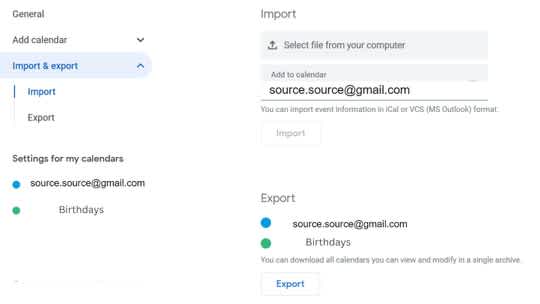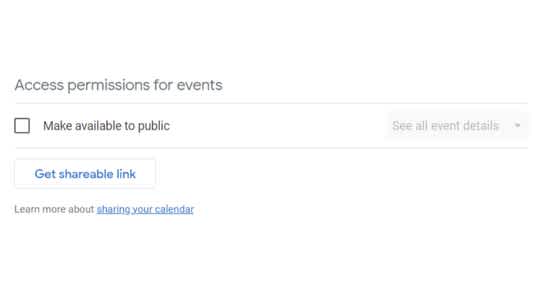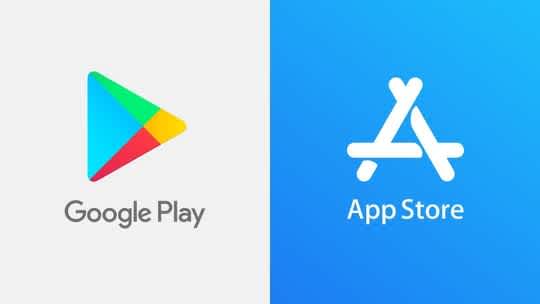Efficient day-to-day organization is a real challenge. Do you remember the days of paper diaries? Sure, they still exist (I own one myself), but they often prove insufficient to meet today's needs, especially in a professional setting. How can we optimize our time management without getting lost in the complexity of modern tools?
The answer is simple: with the help of diary applications and their many functions. One of the best-known is Google Calendar. Here's a complete overview.
Google Calendar: definition
Google Calendar was created by Mike Samuel as part of his 20% project at Google. The beta version was released in 2006, followed by a general release in 2009, on the Web and as mobile applications for Android and iOS.
The strength of Google Calendar lies in its constant evolution. The designers take criticism on board and are constantly improving the tool.
💡Did you know?
In 2010, the media criticized the impossibility of selecting a time zone; Google immediately responded and added this feature.
Google Calendar is a cloud-based time management service. Designed to facilitate the management of daily tasks, Google Calendar enables users to :
- schedule events and appointments.
- set reminders.
- organize their schedules intuitively and efficiently.
- create multiple calendars.
- customize different calendars according to the user's specific needs.
- share calendars.
This facilitates collaboration and helps coordinate complex schedules across geographically dispersed teams.
It's a web application, but also a mobile one. As such, the application can be used on different devices, either via a web browser, or through dedicated apps for iOS and Android.
As a service, Google Calendar syncs seamlessly between your different devices, offering real-time access to your calendar, whether you're using a desktop computer, smartphone or tablet.
Chances are you already know all this, but let me get down to the nitty-gritty: Google Calendar's features.
The essential features of Google Calendar
Over the years, Google Calendar has transformed far beyond its original form as a simple personal organizer into a digital tool offering extensive collaboration capabilities. I'm going to explain its key features, starting with those useful for individual time management and progressing to features that facilitate interaction.
The ability to customize
I choose to present it first, because the user can push customization pretty far, and every Google Calendar is different from another.
- Diverse calendar views: you can choose between different views (Day, Week, Month, Year, Schedule or 4-day) to display your calendar. This flexibility allows you to adapt the display to the task in hand, whether it's a quick overview of the day's commitments or a longer planning over several months.

- The "World Time" function is useful for users who need to quickly know the current time in various parts of the world, which can be essential for immediate planning decisions or to keep in step with global schedules.
- Add attachments directly to events. This can be useful for yourself, but also for meetings, where you can attach agendas, presentations, or other relevant documents that all participants can easily consult.
- Color customization: the advantage is that you can personalize the colors of each individual event type, making it easier to visually distinguish activities or priorities in a busy calendar.
- With the classic but indispensable customizable reminder function: set reminders to alert you before an event via push notifications, email or SMS. This helps you better manage commitments and reduce the risk of forgetting important meetings.
- Renew an event weekly, monthly, annually...
- Time blocking: define specific durations for events, ensuring focused work and avoiding over-commitment.

There are many more, but these are generally the most widely used. Let's take a look at three features that really make Google Calendar feel like your personal assistant.
Synchronization
Between different devices
Google Calendar works seamlessly across all devices, allowing users to view and manage their calendar from their computer, tablet or smartphone. Changes made on one device are automatically updated on all others, ensuring constant access to the most up-to-date information.
With Outlook or Apple Calendar
You're able to import your Outlook or Apple calendar, for example, into Google Calendar. What's more, the process is very straightforward. However, it should be noted that data can only be imported on a computer!
Once exported, events can be imported into Google Calendar. Both ICS and CSV files can be imported onto a computer.
The method is quick:
- Open Google Calendar.
- In the top right-hand corner, find ⚙️ Settings.
- On the left, click on Import and Export.
- Click on Select a file on your computer.
- Select the calendar into which you wish to import the information. By default, they are imported into your main calendar.
- Click on Import.

Collaboration
Here we are: Google Calendar's most interactive features.
Among them are invitations and response management: it's easy to send invitations to events from within Google Calendar and track who has accepted, declined, or marked as maybe their participation.
In addition, the time zone management function is designed to ensure that when a user creates or participates in an event, the time displayed is correct, whatever time zone they are in. This is particularly useful for people who travel or work with international teams. You can specify the time zone when creating the event, and Google Calendar will automatically adjust the time to match the local time zone of each participant. So if an event is scheduled for 9:00 am Paris time, it will automatically appear at 3:00 pm for your colleague in New York.
Finally, you can also integrate your calendar with your website, so that your customers can book a consultation time with you.
💡My tip: how do you integrate your Google calendar with your website?
- Use your computer, not a mobile device.
- Open Google Calendar.
- In the top right-hand corner, find the option ⚙️ Settings.
- Make your calendar public. To do this, on the left, click on the name of the calendar you wish to modify. Then, under "Access permissions for events", check the "Make available to public" box.

- Still on the left of the screen, click on the name of the calendar you wish to integrate into the website.
- In the "Integrate calendar" section, copy the iFrame code shown.
- Under the integration code, click on Customize.
- Select your options, then copy the HTML code displayed.
There's one last feature I'd like to go over with you: calendar sharing. I've been using it for some time now, and it's really changed the way I organize my daily life.
An extraordinary feature: Google Calendar sharing
For me, it's really with this feature that Google Calendar is no longer a simple diary, but becomes a truly collaborative tool. In just a few clicks, choose what you want to share and simplify the planning of your days.
Three sharing modes
The choice is yours, depending on the purpose of sharing. Here are the three ways to share in Google Calendar.

Share a calendar with specific people
Simply add the email address of a person or a Google group. The recipient will need to click on the link sent by email to add the calendar to their list.
Share a calendar with the public
This is a way of allowing people who don't have Google Calendar to find your calendar and make it public. That said, be careful, as making your calendar public means that anyone can :
- find your calendar in Google search results.
- synchronize your calendar with other applications.
- subscribe to your calendar.

Share a calendar with everyone in your organization
If you use Google Calendar within your company, school or other organization, you can make your calendar accessible to everyone in your organization.
Four access rights
Calendar sharing is based on different access rights:
- Show availability only (hide details): this is ideal for outsiders to see only if you're available.
- See all event details: except for events marked as private, outsiders can see all the details of your event.
- Modify events: the person with this right can modify, add or delete any event.
- Make changes and manage sharing: this is the highest level of authorization, allowing the person with this right to delete your calendar.
Problems with sharing with Google Calendar
Sharing with Google Calendar has several limitations and drawbacks, including:
- Security and confidentiality risks: someone with full access also has full control over your calendar. What's more, the only way to make a calendar accessible to people without a Google account is to make it public, which limits confidentiality. Finally, when global permissions are set for a calendar, they override individual permissions, which can lead to unwanted access if misconfigured.
- Complexity of sharing settings: managing different permissions can be complex and confusing, especially when it comes to sharing with specific people or in public.
- Dependence on organizational administration: for accounts managed by a company or school, administrators can limit or disable sharing, reducing flexibility for users of these accounts.
Why not take a look at all the advantages of Google Calendar?
The benefits of using Google Calendar
Google Calendar offers many options that make it attractive to professionals looking to optimize their time management. Here are some of the main benefits.
Universal accessibility
Being a cloud-based service, Google Calendar can be used from anywhere, at any time, as long as you have an Internet connection. This allows users to check and manage their calendar on multiple devices, including smartphones, tablets and computers.
Deep integration with other Google tools
Integrated into the Google Workspace suite, Google Calendar is designed to integrate seamlessly with other Google services such as :
- Gmail.
- Google Drive.
- Google Meet.
- Google Maps.

There are so many possibilities, it's impossible to mention them all here. Nevertheless, here are a few of the most useful.
Firstly, the location feature: when you create or edit an event, users can add a specific location, and Google Maps can be activated from the address of your appointments.
Secondly, if you use Google Assistant, you can ask it to schedule, edit or recall events in Google Calendar, making calendar management even more accessible and interactive.
In synergy with the well-known Google Meet, you can send an invitation to a videoconference. Google Calendar can automatically add events from your Gmail emails.
One account, multiple calendars
One of Google Calendar's great strengths lies in its ability to manage multiple calendars with a single Google account. This feature is useful for professionals juggling various responsibilities and projects, or for anyone who wants to keep their work life separate from their private life.
You can create separate calendars for different categories of events. For example, one calendar could be dedicated to internal meetings, another to customer appointments, and a third to your personal activities. Each calendar can be customized with a specific color.
What's more, each calendar can be shared individually. And I know you've got the sharing options all figured out! You can choose to share your professional calendar with colleagues while keeping your personal calendar private.
What's more, you can set up specific notifications for each calendar. If you have a calendar for birthdays, you can choose to receive reminders a week in advance, while for your important meetings, a reminder an hour before may be more appropriate.
That said, I'd advise you to be careful: it can quickly become tricky to navigate between multiple calendars. This is what my colleague explains in his article How to Sync Multiple Calendars to Display Your Availability and Avoid Scheduling Conflicts.
Features specific to the professional context
With a Google Workspace subscription, you have access to additional functionalities such as:
- Enable appointment scheduling. The procedure for making appointments is detailed in Google support. First, create a new dedicated calendar, different from your personal calendar. Plan the available slots. Define the duration of the slots, e.g. 15 minutes or one hour. Take care of all the details: if necessary, add descriptions, images and set up notifications. Finally, share the booking page.
- Create multiple appointment types, each with its own schedule and booking page.
- Create automatic email reminders to bookers.
- Add up to 20 co-organizers to an appointment schedule.
- Pay for appointments.
- Email validation to avoid unwanted bookings.
However, perfection is not in this world, and Google Calendar has its limits, especially in a professional context.
What are the disadvantages and limitations of Google Calendar?
The important thing for a user is to be aware of the limitations of this tool. These include:
Quantitative limits
Google Calendar imposes certain quantitative restrictions. Here's a summary table of the main numerical limitations:
A weakness in cross-platform synchronization
I've come to the conclusion that Google Calendar is useful for cross-platform synchronization, for example syncing a Google Calendar with an Apple Calendar. On the other hand, it is not efficient for synchronizing several Google Calendars together. This is because :
- Synchronization doesn't really happen in real time, which creates a major risk of overbooking. For example, if you make your calendar public, the Google documentation states that "This change usually only takes a few minutes, but may take up to 4 hours to take effect."
- Events in imported calendars will not be visible to other members of your organization when scheduling meetings. They will only be able to see events from your main calendar, creating chaos between your different agendas.
- It's impossible to customize synchronization (choice of colors, choice of elements you want to make private or public, such as location), which means you can't quickly identify which calendar is the source of which event; it also prevents you from determining which element of a calendar you want to make visible or not.
For example, on the event below, you see three elements: the Summary, the Description" and the Location and Description". With Google Calendar, you can't change any of the three elements: it's all or nothing.

These synchronization weaknesses prompt users to turn to specific tools, such as SyncThemCalendars.
Compatibility with other tools / extensions outside the Google ecosystem
Google Calendar's integration with various tools and extensions to optimize productivity is important. Even if Google Calendar never works as well as it does with Google tools, it's worth noting that it's not closed either. In this respect, it does better than Apple Calendar, for example.
Possible compatibility
Here are a few positive aspects of these integrations:
- Interoperability with calendar standards: Google Calendar supports open standards such as CalDAV, making it easy to integrate with a host of third-party productivity and calendar management applications. Services such as Calendly and ScheduleOnce are compatible.
- Communication: Google Calendar's integration with communication platforms like Slack enables teams to share and discuss events directly from their digital workspace.
- Synchronization with CRM tools: HubSpot uses Google Calendar to synchronize appointments and meetings directly in customer profiles. This improves customer relationship management by ensuring that all interactions are updated and tracked in real time, enabling better preparation and follow-up of customer engagements.
Limitations and challenges
Despite its many successful integrations, Google Calendar has certain limitations that can affect the tool's effectiveness in diverse business environments. Here are some of the main constraints:
- Compatibility with project management systems: its integration with more robust project management systems such as Jira or Microsoft Project can be limited. This can lead to gaps in the synchronization of deadlines and project updates.
- Functional restrictions: some third-party applications do not support all of Google Calendar's advanced features. For example, tools such as QuickBooks or Xero enable you to schedule invoicing reminders and tax deadlines in Google Calendar. However, these integrations may not support advanced personalized notifications or synchronization of specific transaction details, limiting users' ability to receive accurate alerts directly through Google Calendar.
These limitations require careful evaluation by IT teams and end-users alike.

What are the requirements for using Google Calendar?
Using Google Calendar requires very few conditions:
- Have a Google account.
- An Internet connection. And even then, this is only necessary when you want to synchronize your information in real time. The offline mode is sufficient for simple consultation and also allows you to manage your calendar, even if changes are only synchronized once online.
- On a computer, I recommend using the latest versions of browsers such as Google Chrome, Mozilla Firefox, Microsoft Edge or Safari. With a mobile device, Google Calendar is available via dedicated apps for Android and iOS, downloadable free of charge from Google Play Store or Apple App Store. The Google Calendar app requires at least Android 8.0 or later, and iOS 15.0 or later.
How to to download Google Calendar
Downloading and installing Google Calendar is a straightforward process, whether you're using a mobile device or a computer. Here are the steps for each platform.
With smartphones and tablets
It's the same procedure for Android or iOs:
- Open the Google Play Store application or the App Store application.
- In the search bar, type "Google Calendar" and launch the search.
- Find the official Google Calendar application in the results and press "Install".
- Once installed, open the application to start using and configuring it.
With a computer
Google Calendar can be used directly in a web browser without the need for a download. Simply access calendar.google.com and log in with your Google account.
In conclusion, I've explored with you the various aspects of Google Calendar, from its advanced features to its integrations with third-party tools, as well as the limitations encountered. It is essential for users, especially professionals, to understand these elements to optimize the use of this tool in their daily activities. This comprehensive overview aims to give you the knowledge you need to make the most of Google Calendar, while being aware of its potential and limitations.


